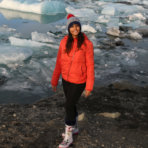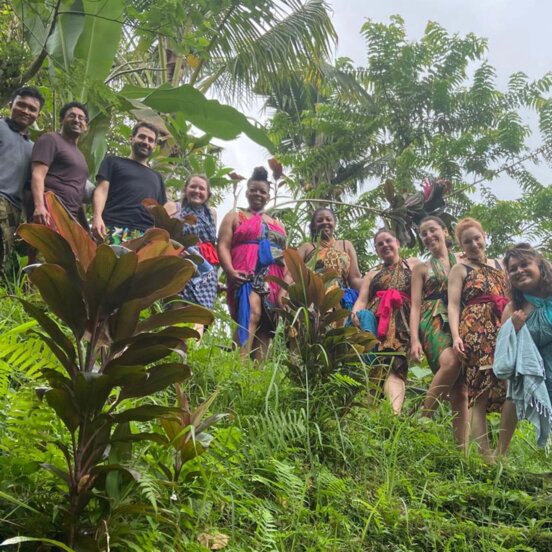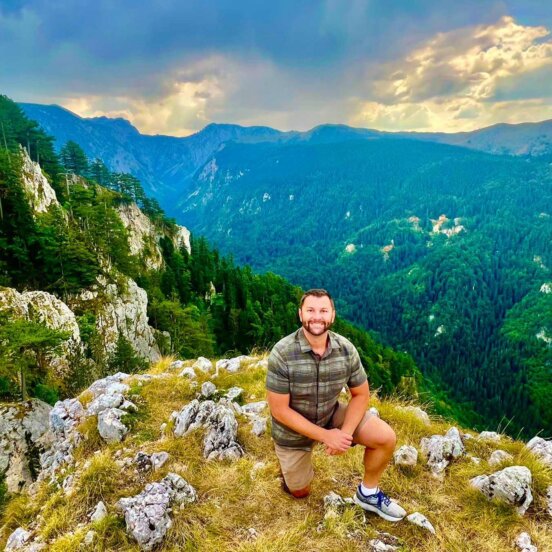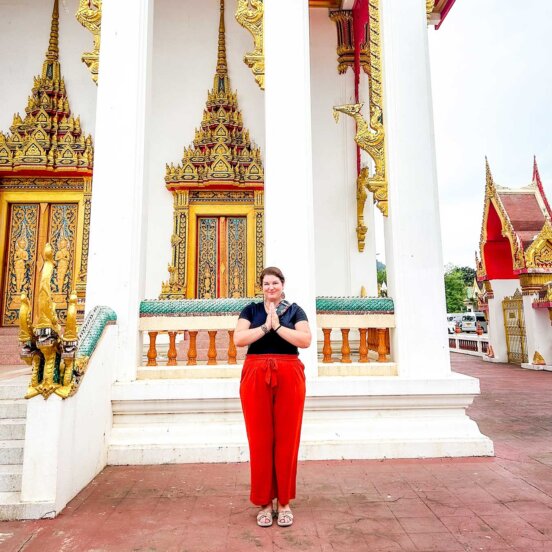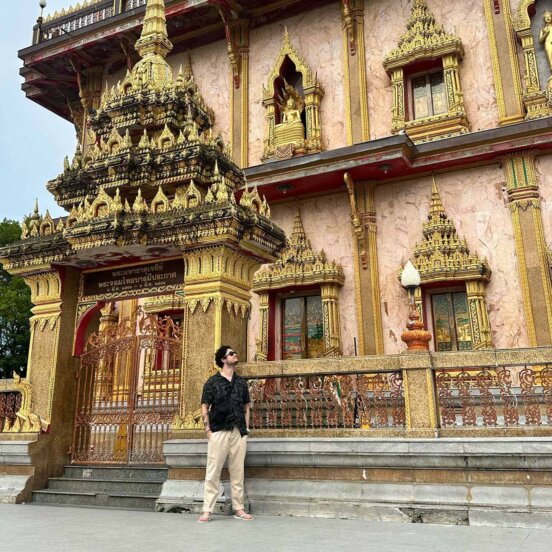The floating villages and flooded forests of Tonlé Sap – Cambodia’s largest lake
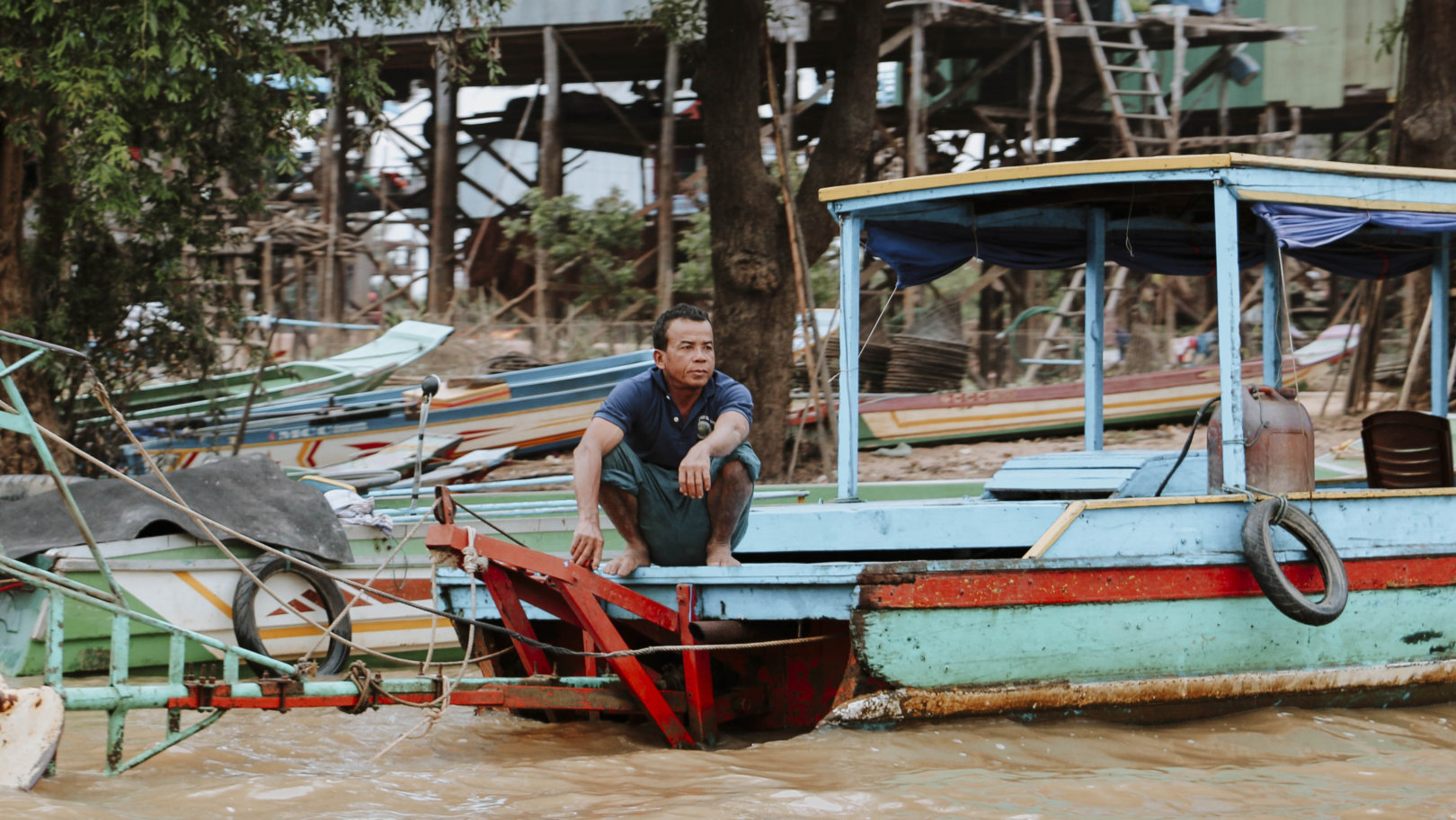
Our captain looks young. When I ask him his age, he smiles cheekily, runs off to the tiny cabin on the boat and gets ready to start the trip. We are on our way to Kampong Phluk, one of’s Cambodia’s floating villages on the banks of Tonlé Sap, Southeast Asia’s largest freshwater lake. Kampong Phluk – whose name means “the harbour of the tusks” – is one of those places you need to see to believe.
Connected to the Mekong by the Tonlé Sap river, the flow of the lake – a Unesco Biosphere Reserve since 1997 – goes in two directions, depending on the season. The changing tide fills the lake and drains it alternatively, making it fluctuate and flood its lakeside villages.
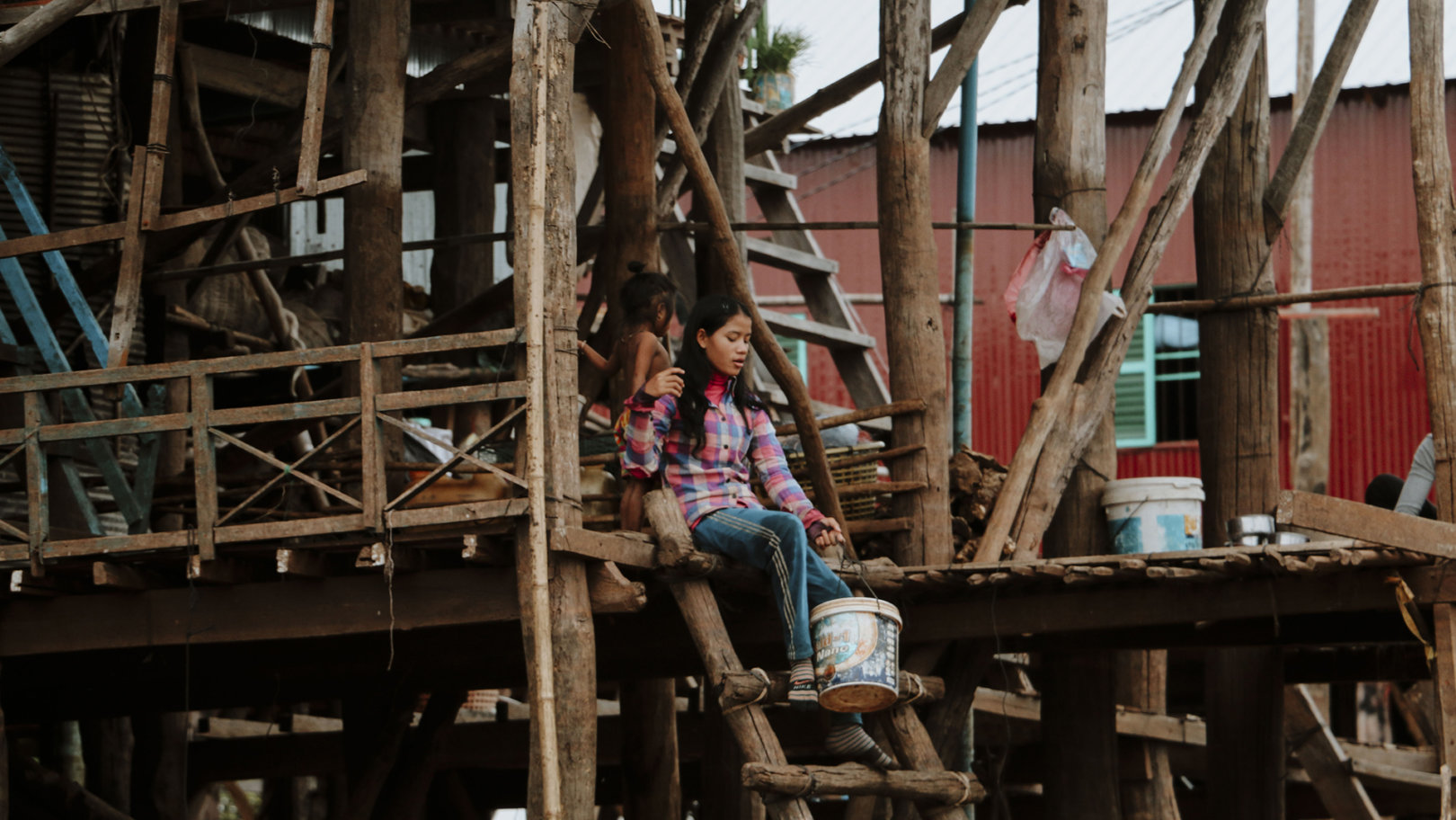
The Siem Reap river spreads out in all its soupy glory
Kampong Phluk is one of them. Every year, during the monsoon, from May to October, the village is converted into a waterway, giving the impression the stilted houses are floating.
As our tiny boat putters off from the Chong Khneas ferry point, the Siem Reap river spreads out in all its soupy glory. Our captain’s name is Boran, which means “ancient” in Khmer – ironic, considering his youthful looks. Nonetheless, he expertly guides the boat as we wave to locals and children on the banks.
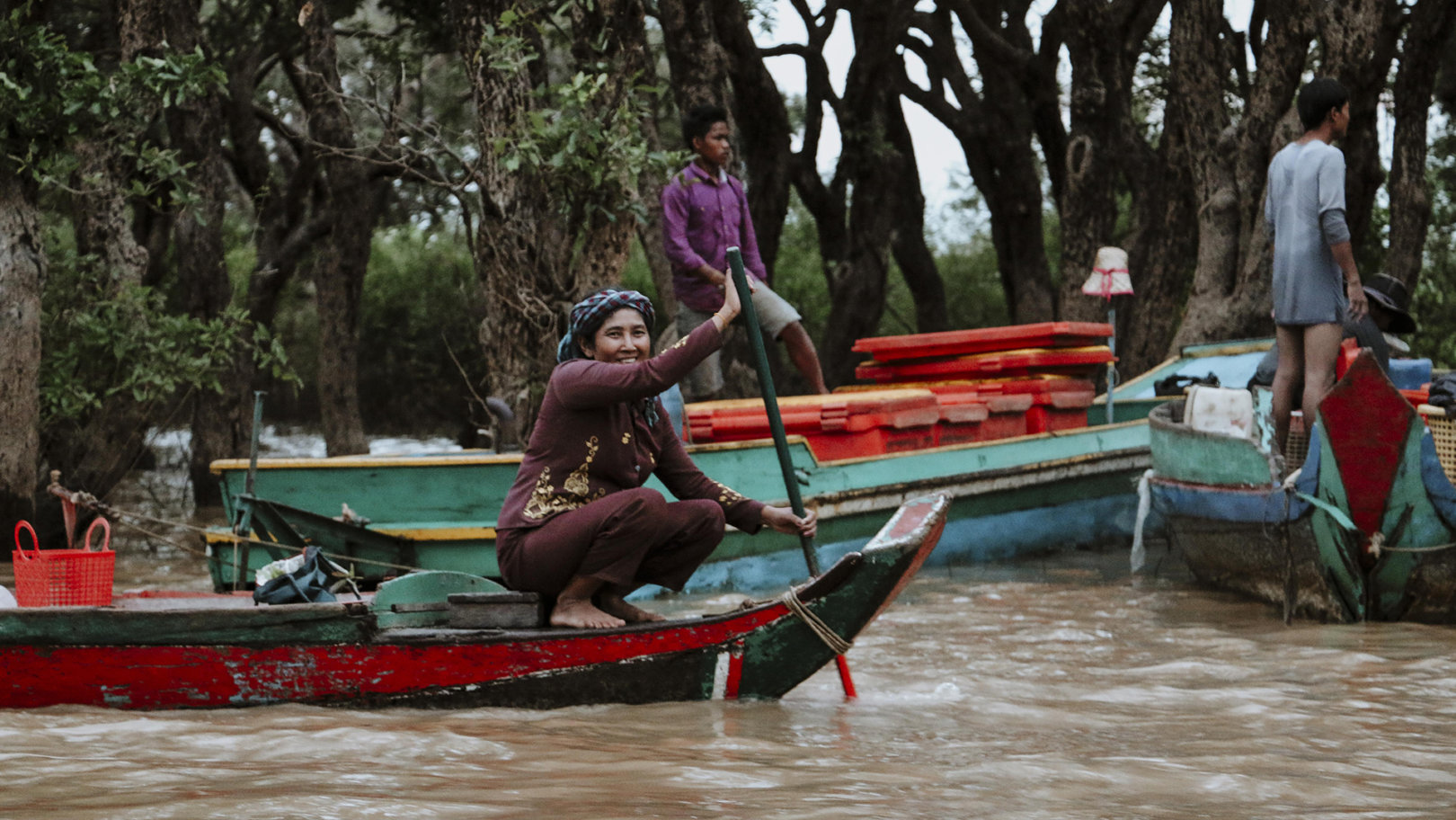
For centuries, the locals survived on fishing alone
As we draw closer to the village, I see a woman and her children making a boat – essential, given locals have little use for any other form of transport here. The seasonal floods are welcome, giving villagers the chance to catch freshwater fish and attract tourists, two of their primary sources of income.
For centuries, the locals of Kampong Phluk survived on fishing alone. But gradually, they started to notice the effects of overfishing and turned to tourism as an additional revenue instead.
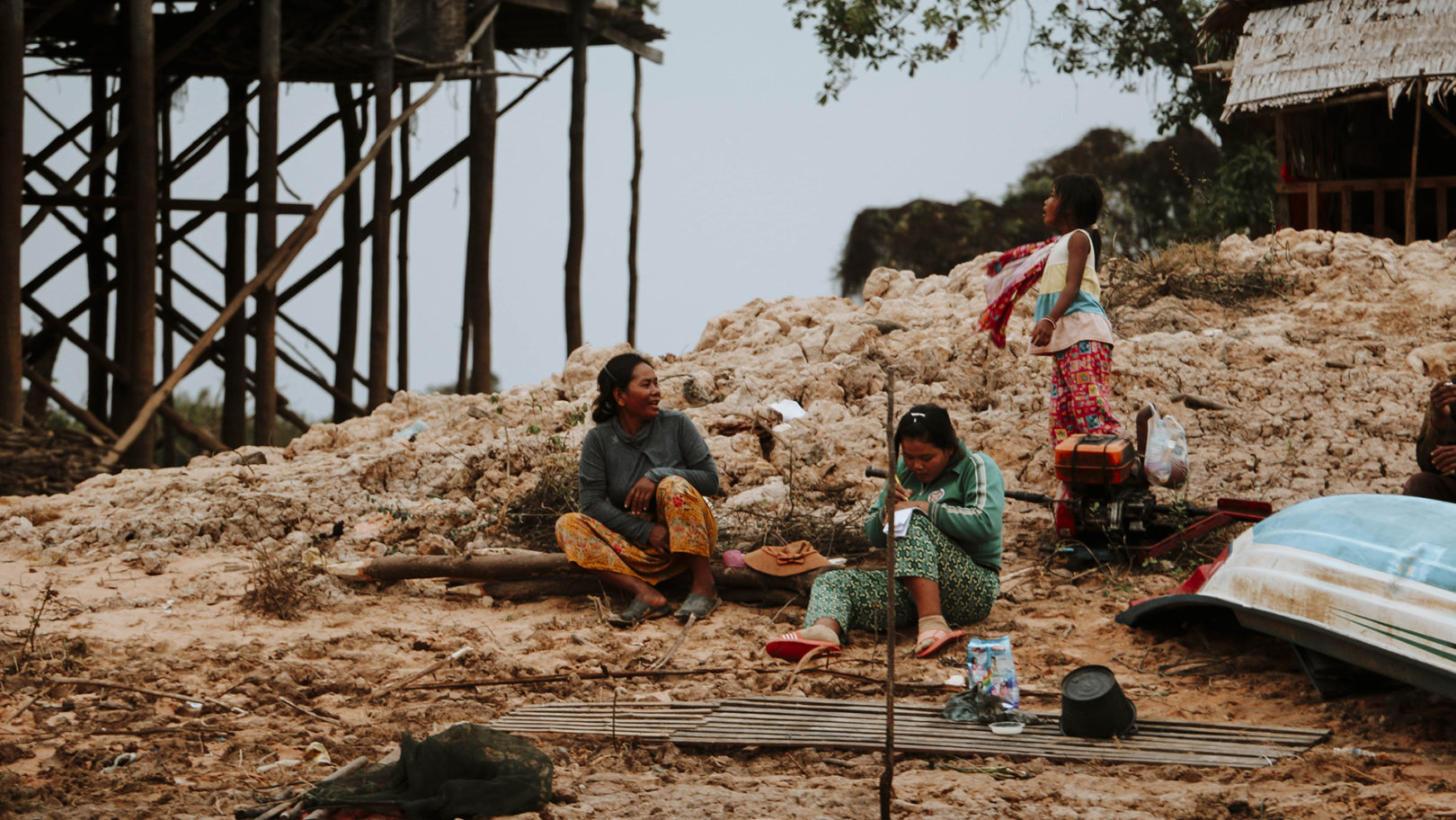
Locals knit baskets and make use of the dry season
Most tourists, including me, visit at the end of January, when the weather is drier and there are just a few spells of rain. Locals make use of this dry season, with some knitting baskets and others drying fish on balconies, 20ft off the ground.
Preserving food for the monsoon is an inescapable chore for locals. For us, the break in the monsoon provides a chance to see the stilted structures in their entirety, revealing huge areas beneath them that offer space to take respite from the heat, dye clothes and breed livestock.
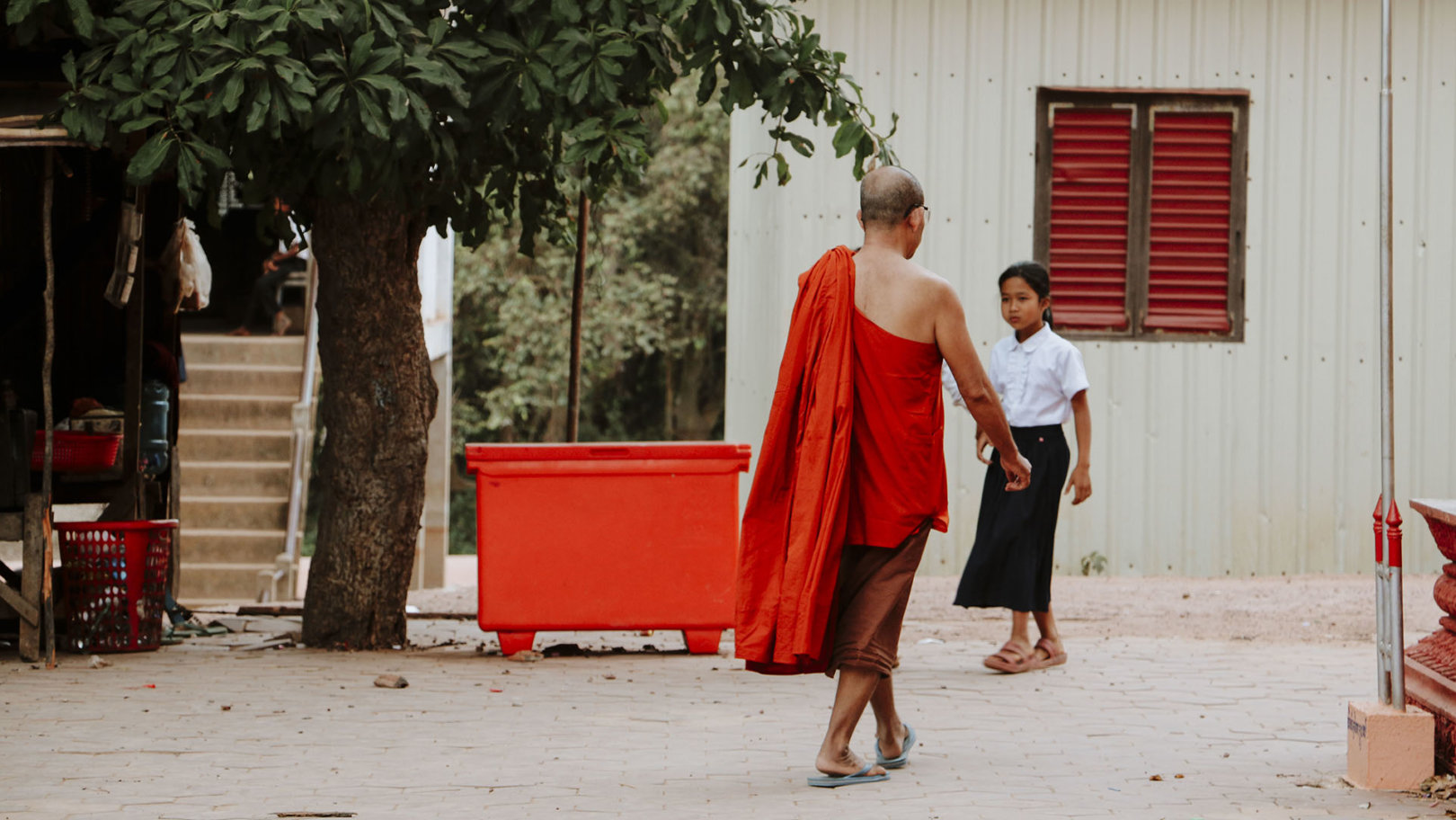
Saffron-robed monks appear, going about their chores
Docking by a temple, I disembark and make my way to the village walking past a school. The children smile from ear-to-ear, quietly whispering “hi!” as I pass, their teacher continuing to teach them rhymes. The school currently rests on the ground below the stilts, but once the rains return, it will relocate higher up.
The elders in the village sit watching, while chants from the temple fill the air. Once prayers are done, the saffron-robed monks appear, going about their daily chores.
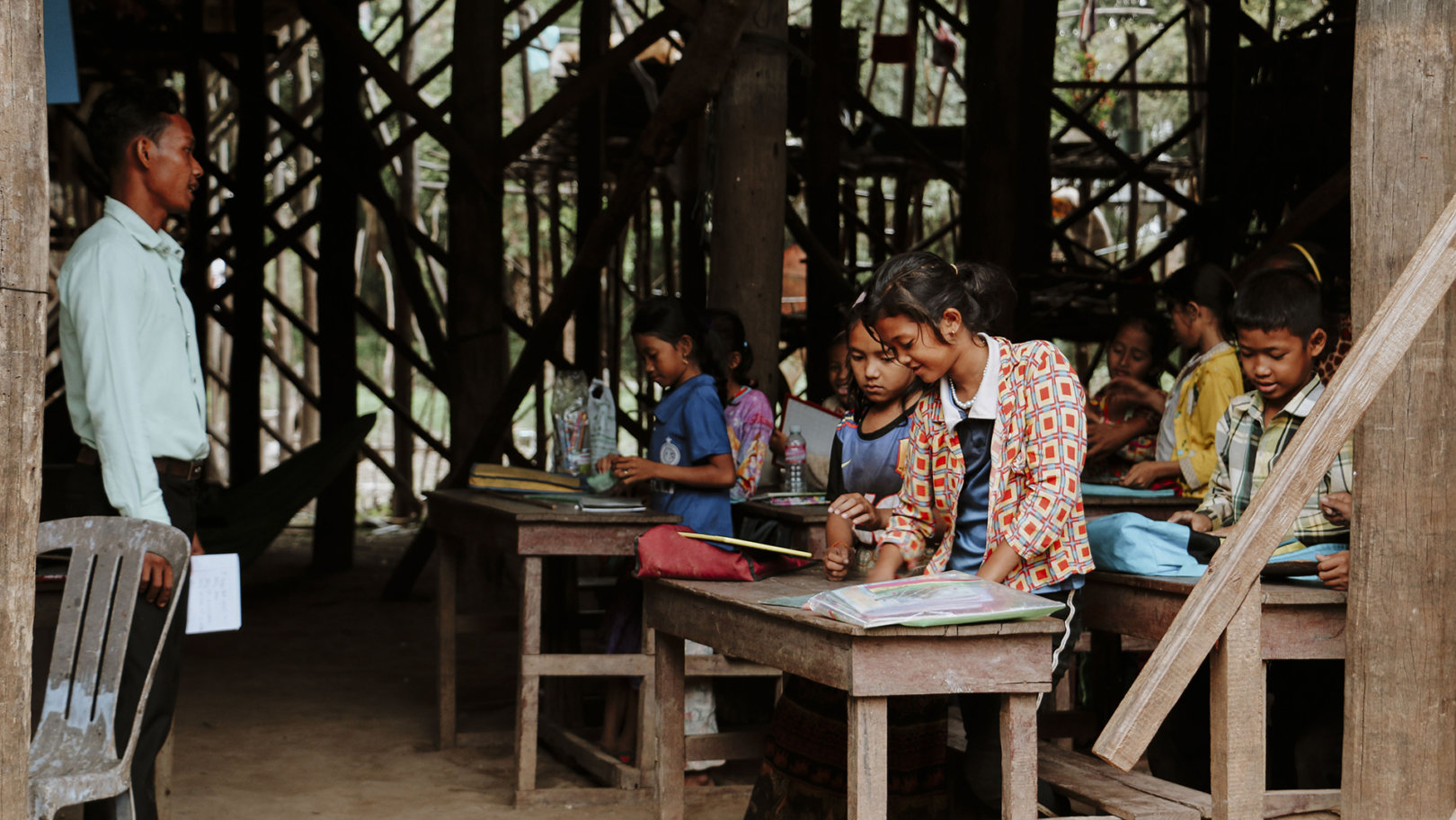
Once the rain returns, the school will relocate
Later, Boran takes us to the edge of the flooded forests, a collection of dense mangroves that grow on the banks of the lake. The one next to Kampong Phluk is the largest and one of the most biodiverse. A few stilted restaurants wait to serve simple Cambodian fare of stews, stir fries and sausages with rice.
The women in the village are in charge of tourism and ferrying tourists on short rides around the mangroves. It’s tranquil and the silence is calming.
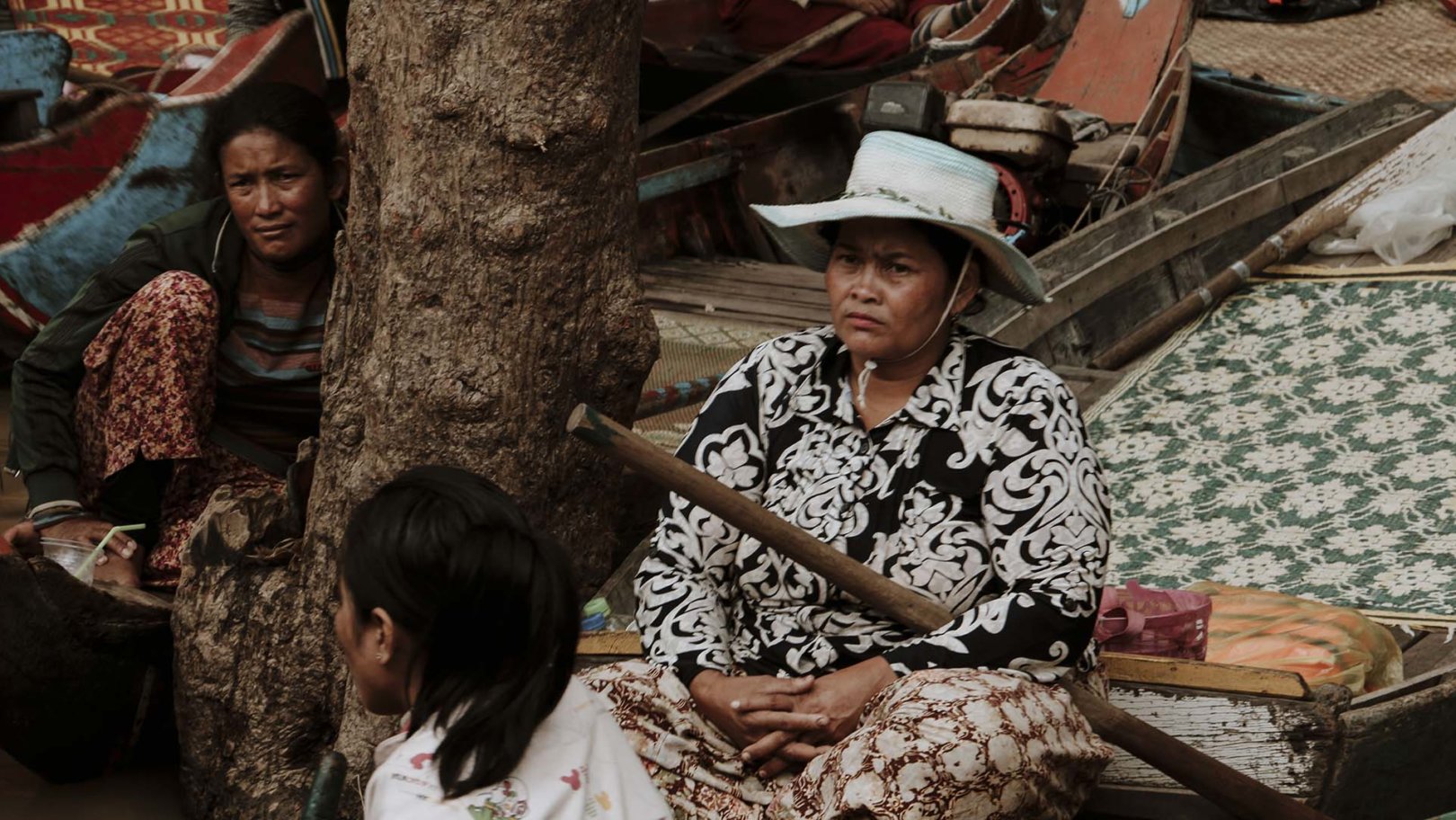
I sit and talk with my oarswoman
After enjoying the stillness, I chat with Soriya, my oarswoman. I ask her about her day-to-day and why it’s just women chauffeuring tourists in this part of the lake. “I’ve lived here all my life and we look forward to earning some money once the chores are done. I like it this way. It helps me get a glimpse of the outside world, too.”
“When the rains come and the water floods, villagers can’t do much”, she adds. So, they like to make hay while the sun shines, showing travellers their special swathe of Cambodia while the tide level subsides.
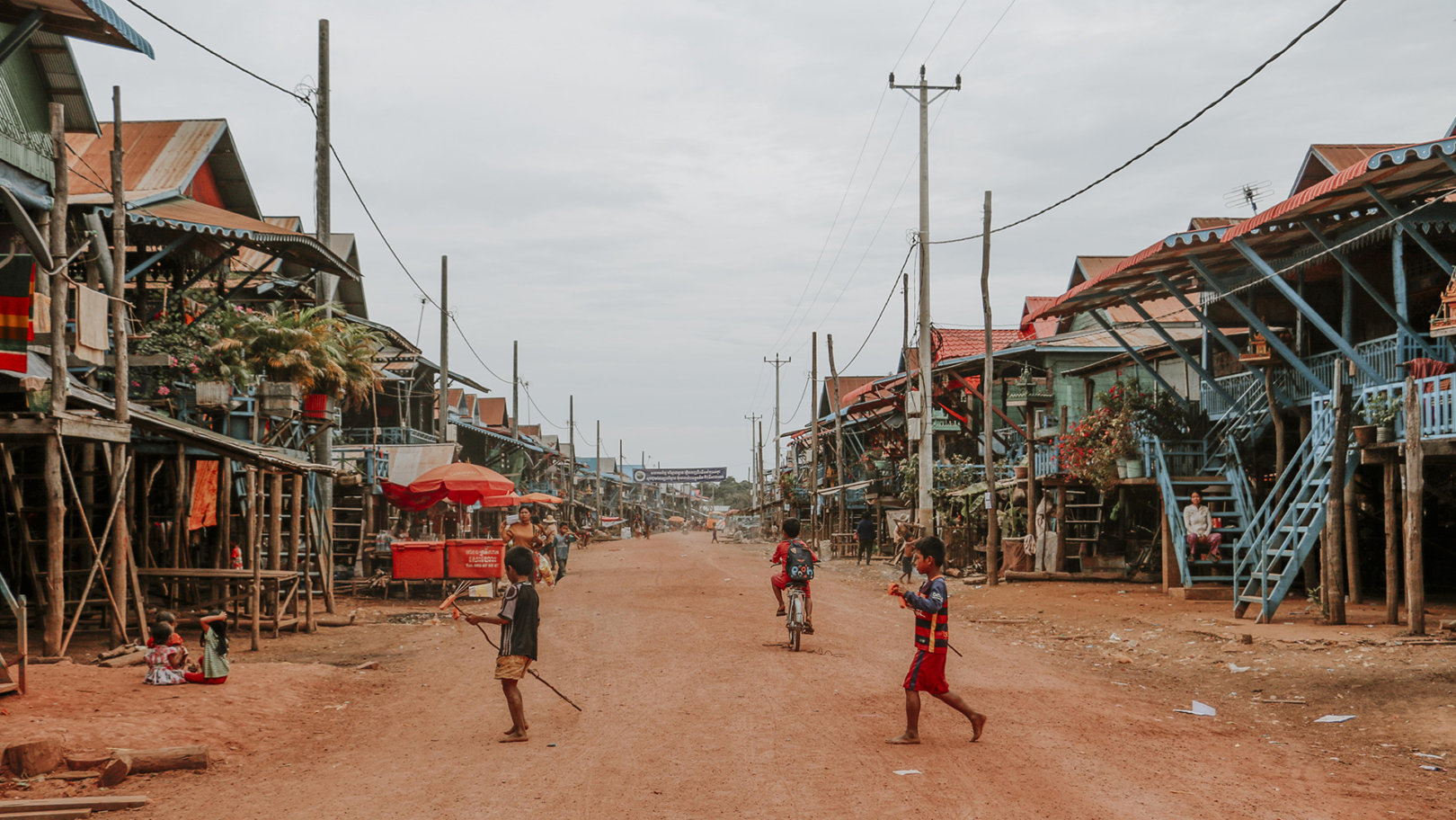
Soriya urges me to watch the sun set on the horizon
When the water level is high, life is spent on stilts: washing clothes, dishes and bathing, all from the safety of their high-rise homes. Life is rigorous yet straightforward.
As we drift, Soriya urges me to watch the sun set on the horizon – one of the best I’ve ever seen.
Flash Pack’s new Vietnam and Cambodia adventure visits the temples of Angkor and Siem Reap, from where you can visit Tonlé Sap and the village of Kampong Phluk in under an hour.
Got a story or adventure that could inspire a solo traveller like you? Tag @flashpack on social or email [email protected] to be featured.
Images: ©Lavina Dsouza of Continent Hop




